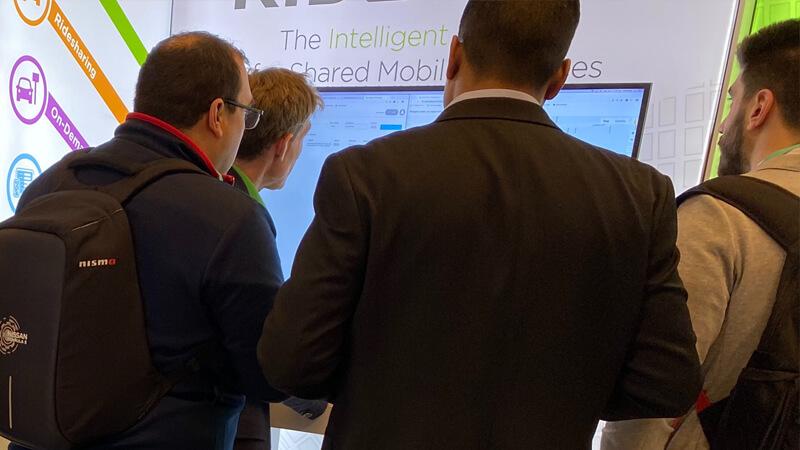
Mobility took center stage at CES 2020, with many predicting mobility will be the mega-trend of the 20s. From Hyundai’s new flying electric taxi, to Bird’s scooters to Segway’s new individual pod, it’s clear the ways people move will transform dramatically over the next decade. Most importantly, almost all these new mobility solutions are carbon-neutral, which is a big win for the environment and for cities across the globe who are trying to lower emissions.
Ride hailing and carsharing companies surged in the last decade. Uber, Lyft, MyTaxi and other ride hailing services launched world-wide. Car sharing took off with services like Car2Go, Getaround, and ZITY. Even traditional transportation companies like Penske jumped into the market with Penske Dash. But as it turns out, running a profitable shared mobility service is hard. Many of these companies, even Uber and Lyft, are still not profitable.
Shared mobility companies were expecting autonomous vehicles to be ready by now. Their business models were built on the profitability of a driverless vehicle. If mobility is going to become the mega-trend of the 20s, companies are going to have to nail the profitability issue. That’s where our expertise comes in.
The future of mobility is less car ownership and more shared fleets. Shared fleets can be ride hailing and carsharing services, corporate fleets, bikes, scooters, public transportation or even flying taxis. The key is to make these shared fleets financially viable.
There are 3 key profit drivers in the shared mobility business: superior customer experience, high fleet utilization, and operational efficiency
As with any business, the priority is customer experience. Providing a superior customer experience means your customers always experience a clean vehicle that’s ready to go whenever and wherever they need it. It may also mean partnering with other companies to provide extras like guaranteed parking spaces or an app that shows nearest charging station.
The second rule of profitability is high-utilization. High-utilization is about maximizing the number of hours and ways vehicles are used to get the greatest return on investment. Minimizing fleet downtime may require fluctuating business models. A fleet could be used for corporate cars or carsharing during the day and shift to ride hailing at night.
Finally, your fleet needs to operate efficiently. That means you know the vehicles that need cleaning, and you clean them right away before there’s any customer dissatisfaction. It means knowing where your vehicles are so you can meet demand quickly and lower congestion. And you want to make sure every ride has enough fuel or charge to complete the trip.
The next decade’s shared mobility services will undoubtedly include autonomous driving and perhaps even autonomous air taxis. Personal car ownership will begin to decrease as people choose to pay for their transportation as they consume it, rather than having a single vehicle parked and unused for 90% of the time. Autonomous vehicles will also change the cost structure of ridesharing dramatically. Industry analysts predict that the cost could drop from $1.50/mile to 25 cents/mile or even less, especially with EVs needing less fuel and maintenance.
In the future, we expect people will subscribe to mobility-as-a-service. Shared mobility companies will offer a variety of vehicles to meet any occasion, and even create fleets with specialized services within the vehicles. For example, if you’re taking a family trip to the mountains, you need a different type of vehicle than if you’re commuting to work. Shared mobility services will also partner with entertainment services like Netflix or Amazon for entertainment services and unique customer experiences. There could be a Tinder car service for dating, for example.

Whatever the new mobility service, the same core demands will exist – superior customer experience, operational efficiency, and high-yield profitability. At Ridecell, we provide the intelligent software, business services, and ecosystem partners to address all the above. That’s how we help our customers overcome the profitability gap in shared mobility.
At CES 2020, the future of transportation was on display. What’s clear is we need more than one solution. Much like how the cars of yesterday needed roads, fueling stations, tires, and roadside service, tomorrow’s transportation will need an ecosystem of solutions. From car manufacturers to smart cities to electric companies, all play a part in this new mobility world. The carsharing and ride hailing companies today are just glimpses into the autonomous driving future. Ridecell is the platform that glues it all together so that the new world of transportation will be as convenient and satisfying for consumers as the old world of car ownership. This is important, it’s exciting – and most of all, if we are to meet aggressive climate goals, it’s vital that we all succeed.
Author: Mark Thomas, VP of Marketing and Alliances, Ridecell


